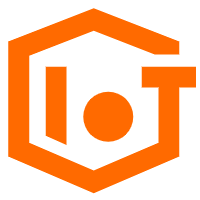In recent years, the concept of industrial big data has gradually being applied to real-world applications. Chen Chen – K2Data’s Chief Operating Officer – presented on the current situation with industrial big data in China at an event hosted by Tsinghua Big Data Industry Association. In particular, Chen Chen spoke about how big data can push China's industrial transformation and upgrade. He also talked about the problematic features of industrial big data, the challenges facing the industry, and the implementation path that industrial big data should follow.

Chen Chen speaking to the Tsinghua Big Data Industry Association
China’s Big Data Digest reported on some of the exceptional content at the event. These quotes have been edited for brevity but are otherwise true to the source:
The critical technical element of the next big industrial revolution is industrial big data
All major industrial countries are under pressure to transform from traditional manufacturing to manufacturing and service industries. In the United States, it’s been the industrial internet revolution. Germany, on the other hand, has put forward the strategy of implementing Industry 4.0. In China, our country has put forward the "Made in China 2025" strategic plan. The industrial internet in the United States focuses on using the Internet to activate traditional industries to drive industrial change.
The key is to make intelligent decisions through big data analysis capabilities
The essence of Germany's Industry 4.0 is the standardization of smart factories based on a "cyber-physical system.” The "Made in China 2025" strategy combines the industrial internet with intelligent manufacturing. In the face of the new round of industrial revolution, we should intelligently upgrade based on a broad integration of informatization and industrialization.
The "real" big data is not about data size, it is access to this data after saving it; hat needs to be done is intelligent analysis and intelligent decision-making
Through intelligent analysis and optimization system, an “Industrial Brain" built by these two factors will help us make correspondingly intelligent decisions. These intelligent analyses and decision-making are inseparable from the original systems of information and automation. However, they cannot be separated from physical equipment or the equipment to generate these data.
Industrial big data’s origin is part production and part operations data. A large part of it is the production of high-end products and equipment and the machine data generated in the production of said high-end products and equipment. Based on these data, we integrate the environmental data of the physical operations environment and construct a big data system with intelligent analysis and optimization based on the information management system. We then use the automation system to achieve the goal of quality improvement, efficiency improvement, consumption reduction and risk control.
We can divide industrial big data into three categories:
These three kinds of data, when combined, are what we refer to when we use the term "industrial big data."
Mining industrial big data is the combination of using the industrial Internet of Things data, cross-industry data and enterprise information data. It’s about taking data which gets scattered about all the various corners of an enterprise and integrating it. Consequently, by mining the contents of this fused data, the value can be produced.
In an industrial system, the type of data, data format, and data structure have a vast, complex structure. There will be tens of thousands of parts and components in a steam turbine. A manufacturer of complex equipment will easily have more than 300 data types. Therefore, the industrial field must be capable of working with all sorts of data.
High throughput, whether it is production equipment or intelligent equipment, it means that we can generate data 24 hours a day. We collect data not in days or hours but minutes and seconds, and in many applications even in milliseconds.
The volume of these data is beyond large and approaching huge. Massive quantities of equipment get measured, and the number of points we measure is enormous. The combination of a high frequency of data collection, a vast total amount of data throughput and high real-time data requirements are the hallmark features of industrial big data.
When it comes to designing a genuinely new product, a large number of disciplines and professions are involved. For example, when creating a piece of complicated equipment, it's more than just data related to structural analysis, there is fluid mechanics, acoustics, dynamics, electromagnetic radiation shielding. Everything must be considered and interconnected. The "strong correlation" between data reflects the systematic nature of the industry and its complicated dynamic relationships.
Based on the characteristics of industrial big data, data analysis of industrial big data and consumer data analysis are two entirely different fields. Consumer's interactions with the Internet is the basis of big data analysis; Physical entities form the basis of Industrial big data and the study of those physical entities in their environment.
In general, the physical entity in question is our production equipment and the production of intelligent and sophisticated equipment. However, in the industrial field, data causality and the reliability of the model must get emphasized. The accuracy of the analysis results must get improved to feed the analysis results back to the real process of industrial control.
Enterprises face situations where due to weak data foundation, the collected data is insufficient, or there might not even be data. Enterprises want to make a strategic adjustment of data transformation so that they can make better investments. However, if they do not have a strategic plan, it is difficult to afford the cost of professional data professionals.
The market also lacks the composite talent needed for industrial big data. Also, each industrial area has a unique industry knowledge threshold and mechanism formed by the industry threshold. Therefore a universal solution cannot be comprehensive in an industrial field. Any given industry solution only has value for the particular business sector where it is relevant.
Many partners or customers initially do not know how the data and business issues are related or they are unclear on how to combine them. They do not know that raw data in and of itself is not a panacea to solve business problems. Some enterprises did apply industrial big data's vision to their strategies. However, there is no straight path to implementing business and industrial big data.
Big data is more than just IoT data capture and storage. It includes data management, analysis, and feedback. We need to build a closed-loop system over the data’s lifecycle. Making this closed loop requires a process that cannot be done in one go. At the same time, the application of big data will involve the transformation of internal management processes and business philosophy.
Industrial big data is a fusion of the three types of data in the industrial field. The scenario that most realizes the value of big data is not intelligent manufacturing. At the same time, it also includes the innovation of business models in the industrial internet, so the corresponding management concepts and management mechanisms must also be changed.
This is the most prominent challenge management faces. At times, you will see that industrial enterprises’ big data applications are not even ones that an enterprise’s CIO is capable of driving. The entire enterprise must promote the change at the strategic level and have a clear data-driven business plan.
In general, planning an enterprise’s big data business can take place in two dimensions. One dimension is from a business-driver perspective. We should think about what are the overall business objectives of the enterprise, what kind of transformation should be done to achieve these objectives, and which aspects should be improved.
What are the specific business promotion and transformation directions? To achieve the business’s goals, what is the ideal business process? How can the corresponding data streams’ combination and mapping help to make this process a reality? This is a top-down thought process, where top corporate managers and strategic managers theorize and make decisions which filter from their level through the suggestions for improvement and enrichment by middle management, before final implementation.
More often than not large data applications can indeed solve business problems. However, they cannot answer all of them. Big data applications help enterprises and not only at the specific business problem-solving level. They allow enterprises to build their ability to control their data. When companies have this ability, they can genuinely be enabled to make changes in their internal production management and external business models to form a continuous capability of innovation and application.
But the story doesn't end at planning. Proper implementation of industrial is essential in making it successful for businesses. Enterprises need to address questions from multiple aspects after receiving data. Where do these data come from? If you don’t have data, how do you collect the data you want and what are the characteristics of that data? Is it the data generated by time series, spatiotemporal data, and smart products? Is it the data generated by the production equipment? What is the amount of data in the end?
The second thing is the understanding of how this data will be saved, managed, and used. The more critical aspect is how to ensure data quality. The third thing is what system and what kind of tools get used for data storage, data management, and data processing? At the same time, how these data are integrated and correlated is not only analyzed and managed by the data generated by the equipment but also related environmental data, geographical data and other cross-relational data created during the process of analysis.
Industrial big data application scenarios are primarily manufacturing and innovation. Business innovation life cycle is the center of the manufacturing scenario that occurs in advanced manufacturing. It is driven by big data-centric innovative product design, intelligent manufacturing, and intelligent services, to achieve "quality, efficiency, reduced consumption and reduced risk” to enhance the competitiveness of enterprises in the industry.
Creation of new services is the center of the innovation scenario in the industrial Internet (manufacturing + Internet). The industrial internet carries the peripheral ecosystems of service products with intelligent networked industrial products to achieve the purpose of creating emerging markets and business models.
Construction machinery and equipment mostly gets used in field operations under harsh and complex operating conditions. Big data solutions based on real-time monitoring equipment status of construction machinery will help realize preventive maintenance and service of equipment before equipment failure.
Proactive warnings will trigger maintenance plans in advance. The analyses based on big data of equipment operation will bring about new decisions and innovatively help enterprises to judge the market temperature accurately. They will be able to achieve accurate product marketing, product improvement, and enterprise risk control.
Based on industrial big data analysis platform, we achieve significant results from failure warning to operational optimization. Wind power data resource pools such as wind turbine design, wind turbine simulation data, turbine operation and maintenance files, fan status monitoring data, wind tower data, meteorological data and geographic information are all integrated into the industrial big data analysis platform.
Through equipment intelligence and supply chain coordination integration gradual upgrades to wind power equipment manufacturing are implemented. Based on the existing business of improving quality and efficiency, new companies will be further driven to take part in the industrial internet.
Chen Chen gave an overview on how the industrial big data can revolutionize the whole Chinese industry. In this blog, we discussed how industrial big data is a combination of intelligent decision-making and analysis, and how it can prove beneficial to the industry in transformation.
We also discussed the types and various features of industrial big data and how one is distinct from the other. However, there are also some challenges that enterprise face while implementing big data. Hence, organizations require a proper plan before going forward with the implementation.

2,599 posts | 765 followers
FollowAsiaStar Focus - June 30, 2022
Iain Ferguson - March 22, 2022
Alibaba Cloud Community - April 30, 2024
Alibaba Clouder - November 20, 2020
Alibaba Cloud Community - May 17, 2024
Alibaba Cloud Community - January 7, 2022

2,599 posts | 765 followers
Follow IoT Platform
IoT Platform
Provides secure and reliable communication between devices and the IoT Platform which allows you to manage a large number of devices on a single IoT Platform.
Learn More Big Data Consulting for Data Technology Solution
Big Data Consulting for Data Technology Solution
Alibaba Cloud provides big data consulting services to help enterprises leverage advanced data technology.
Learn More Big Data Consulting Services for Retail Solution
Big Data Consulting Services for Retail Solution
Alibaba Cloud experts provide retailers with a lightweight and customized big data consulting service to help you assess your big data maturity and plan your big data journey.
Learn More Cloud Data Transfer
Cloud Data Transfer
Unified billing for Internet data transfers and cross-region data transfers
Learn MoreMore Posts by Alibaba Clouder